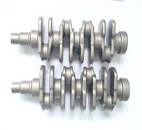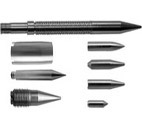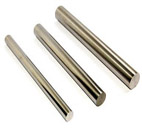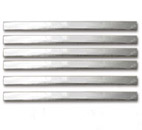
Automotive
Tungsten applications in the automotive sector comprise short lead-time, one-off components, such as in the motor sport sector and long run, standard parts for engine and transmission OEMs for series production.
All types of requirement can be accommodated within the tungsten organisation and quality standards and customer service levels remain consistent for each type of customer.
Motor Sport
Members of the Motorsport Industry AssociationThe minimum weight requirements of motor sport formulae are often met with ease as more exotic materials give designers the ability to create lighter and stronger components in the search for greater performance.
Adding tungsten ballast weight helps to provide competitive advantage by giving the ability to add ballast within confined spaces in exactly the correct place to both trim the weight distribution and lower the centre of gravity of a competition car and still meet the minimum weight requirements.
A lower centre of gravity can also be achieved by adding tungsten skid plates, which also protect the lower parts of the chassis, especially important in F1, where a ride-height monitoring plank is used.
Tungsten serve the motor sport community by being capable of responding quickly to fast-moving developments and short-lead time manufacturing requirements.
Engines
SAM Tungsten Alloy Engine Parts. Due to its very high density, SAM tungsten heavy alloy is an ideal material for suppressing vibration in static or moving components. Applications for SAM tungsten heavy alloy include:
- Crankshafts, pistons and gear levers in high performance cars
- Turbine blades
- Flywheels













